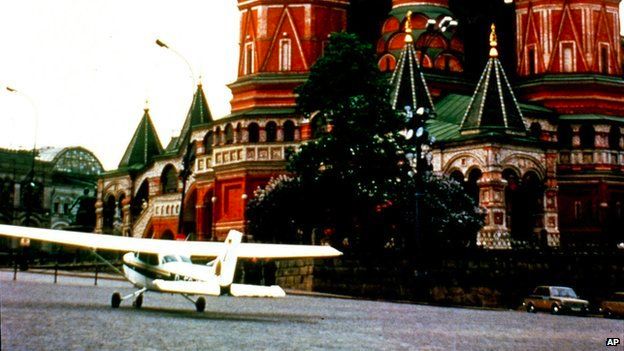How a Teenager in a Cessna Helped Topple the Soviet Union
by Akhil Emmanuel, Form VI
4 min. read — May 19, 2023

On May 28, 1987, a 19-year-old German pilot named Mathias Rust made international headlines when he flew his small Cessna 172 aircraft from Helsinki, Finland, through Soviet airspace and landed in Moscow's Red Square, in what is still considered one of the most audacious acts of aviation in history.
Rust's flight came at a time of heightened Cold War tensions between the Soviet Union and the West, and it immediately caused a major international incident. The flight was a stunning embarrassment for the Soviet military, which had been widely considered one of the most formidable air defense systems in the world.
The flight itself lasted for over six hours and covered nearly 1,000 miles. Rust had planned the flight meticulously, spending several months researching the Soviet air defense system and plotting his route.
After refueling at Helsinki-Malmi Airport on May 28, 1987, Rust informed air traffic control that he was headed for Stockholm as he took off. Yet, shortly after his last communication with traffic control, he abruptly changed direction and flew east near Nummela, Vihti. Despite attempts by air traffic controllers to contact him as he flew along the heavily traveled Helsinki-Moscow route, Rust turned off all of his communications equipment. Rust disappeared from the Finnish air traffic radar near Espoo. Control personnel presumed an emergency and a rescue effort was organized; however, nothing was found.
Rust crossed the Baltic coastline over Estonia and turned towards Moscow. When he appeared on Soviet Air Defence Forces (PVO) radar and failed to reply to an identification signal, Three SAM battalions of the 54th Air Defence Corps tracked him for some time but failed to obtain permission to launch missiles at him. Air defense re-established contact with Rust's plane several times but confusion followed all of these events. Shortly before the incident, the PVO system was divided into several districts, which made management simpler but added more work for tracking officers at the borders of these districts. The nearby air regiment in Pskov was conducting maneuvers and, as a result of the inexperienced pilots' tendency to forget the correct OFF designator settings, local control officers mistakenly marked all aircraft in the area as friendly, including Rust's plane.
A similar scenario occurred near Torzhok, where air traffic was intensified due to a rescue mission following an air crash that had occurred the day before. Rust, who was piloting a comparatively slow propeller-driven aircraft, was mistakenly identified as one of the helicopters participating in the rescue effort. He was spotted multiple times and incorrectly marked as friendly twice. As Rust's plane was perceived to be a domestic training aircraft in violation of regulations, it was assigned the lowest priority by air defense authorities.
Initially, Rust had planned to land his plane inside the Kremlin. However, he later altered his plan and chose to land on Red Square instead. Despite making a few attempts to land there, the heavy pedestrian traffic made it impossible for him to do so. Eventually, Rust was able to land on Bolshoy Moskvoretsky Bridge, near St. Basil's Cathedral, after circling the square for a final time. An inquiry later revealed that trolleybus wires, which would have made it impossible for him to land there, had been removed for maintenance that day and replaced the following day. After landing, Rust taxied past the cathedral and stopped about 300 feet away from the square, where he was greeted by curious onlookers who asked him for autographs. When asked about his origin, he initially stated that he was from Germany, which led bystanders to assume that he was from East Germany. However, Rust surprised them by clarifying that he was actually from West Germany.
The incident caused a major diplomatic crisis between the Soviet Union and Western countries, with the United States and NATO condemning Rust's flight as a dangerous provocation. The Soviet government also faced intense criticism for its apparent failure to detect and intercept the small aircraft. The flight highlighted the weaknesses of the Soviet air defense system and demonstrated the vulnerability of even the most heavily guarded areas to determined intruders. It also became a symbol of the growing dissatisfaction with the Soviet regime among many young people in the Soviet Union and Eastern Europe.
Rust was eventually tried and convicted of several charges, including hooliganism and violation of Soviet airspace. He was sentenced to four years in a Soviet prison but was released after serving just over a year, following an international campaign for his release.
Today, Mathias Rust's flight is still remembered as one of the most daring acts of aviation in history. It remains a cautionary tale about the importance of effective air defense and the dangers of underestimating potential threats.
